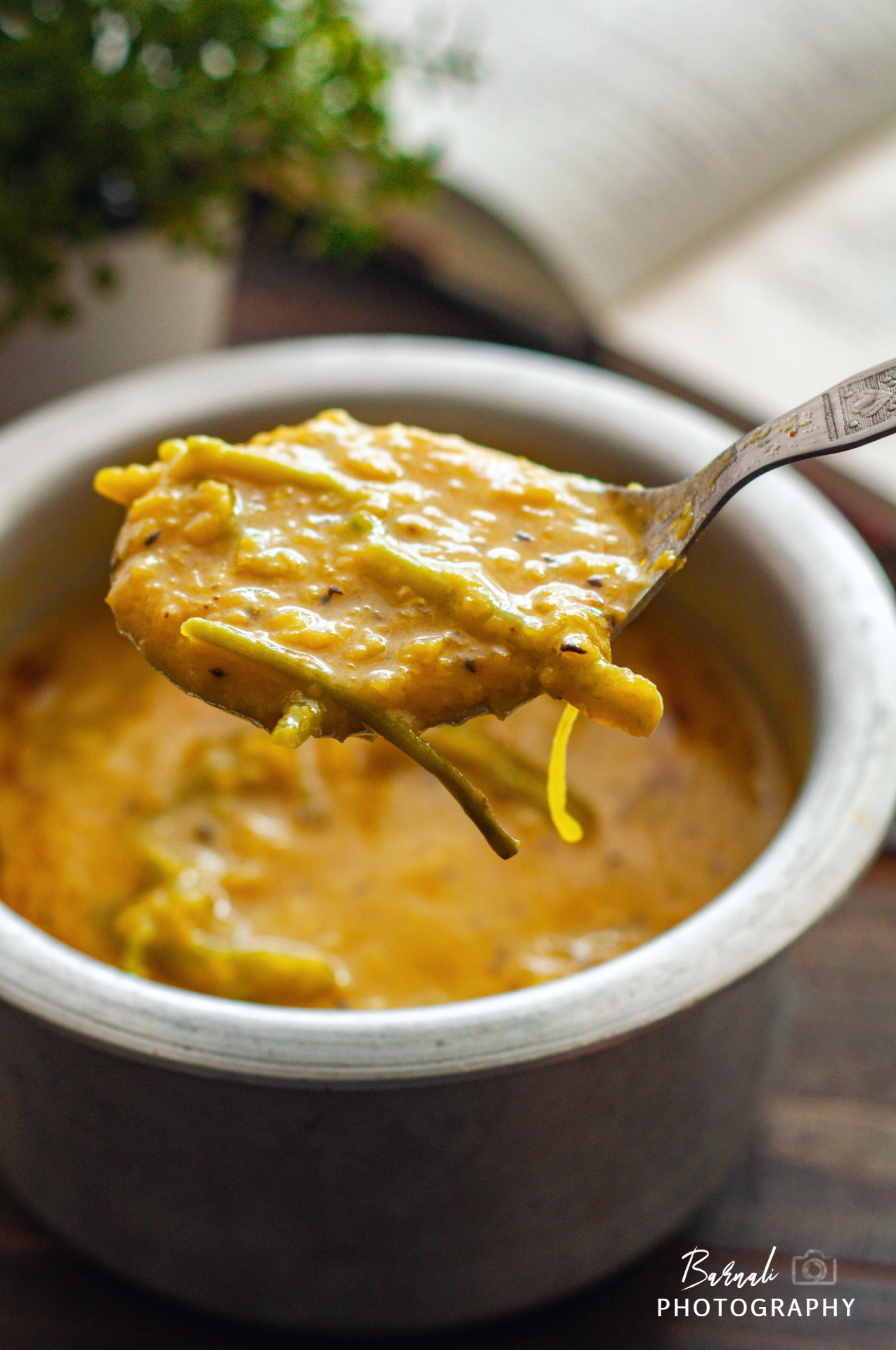Lal Shaker Datar Dal | Red Amaranth Saag Stem Dal

In this recipe I have used the stems of the red saag which is known as Lal Shaak in Bengal and Red Amaranth in Maharashtra. The leaves are usually used to make a dry subzi and the stems are discarded here in Pune. In Bengal however the thick stems of this Red saag is used for making dals and data chorchori. Thick stems have more flesh in them which makes it enjoyable to chew them. In today's recipe I have used the tender stems of the saag which my maid discarded after cleaning the saag. My maid at times questions my sanity when she sees me cooking with all these waste items. But when the final dish tastes and looks stellar she has to eventually agree that all these wastes pack a punch and can be actually made into nutritious and delicious recipes.
Since tender stems are used, I made sure to take off any hard skin from the stems. Its very easy to remove them. Just cut the stems halfway through, you will see threadlike skins coming out, then pull the cut stems down which will also pull out teh threadlike skin with it. Keep repeating until you have all the hard skin peeled off. This is also needed as Lal saag stems tend to be a little hard and they don't soak up the seasoning from the dal. Removing the skin helps them absorb all the seasoning.
Now you might be wondering, the title says Red Saag Stems so why are the stems in the picture looking green? There is a scientific justification to this. Red vegetables lose their color when cooked because the pigments that cause the color, called anthocyanins, dissolve in water and leach into the cooking water causing color fading. Same is the case here, the color leached into the water in which it was boiled and the stems became green! Another surprising thing was, I did add the red color water into the dal when I boiled it but that did not make the dal red. Which means unlike Beetroot whose color is more pigmented and makes everything red, the Amamranth doesn't impart such a pigmented after effect. You can also make the same recipe with green Amaranth stems as well. The recipe is very earthy and pairs well with steamed rice and any vegetable on the side - perfect for hot summer afternoons.

Preparation Time : 15 minutes
- Masoor Dal - 250 gm
- Amaranth Leaves Stem - 50 to 100 gm
- Radhuni / Celery Seeds - 1 tsp
- Green Chili - 2 (Slitted)
- Red Dry Chili - 2 ( broken)
- Bay Leaf - 2
- Turmeric - 1/2 tsp
- Mustard Oil - 2 tbsp
- Water - As needed ( 2 cups or more as per consistency)
- Salt - To Taste



















0 comments